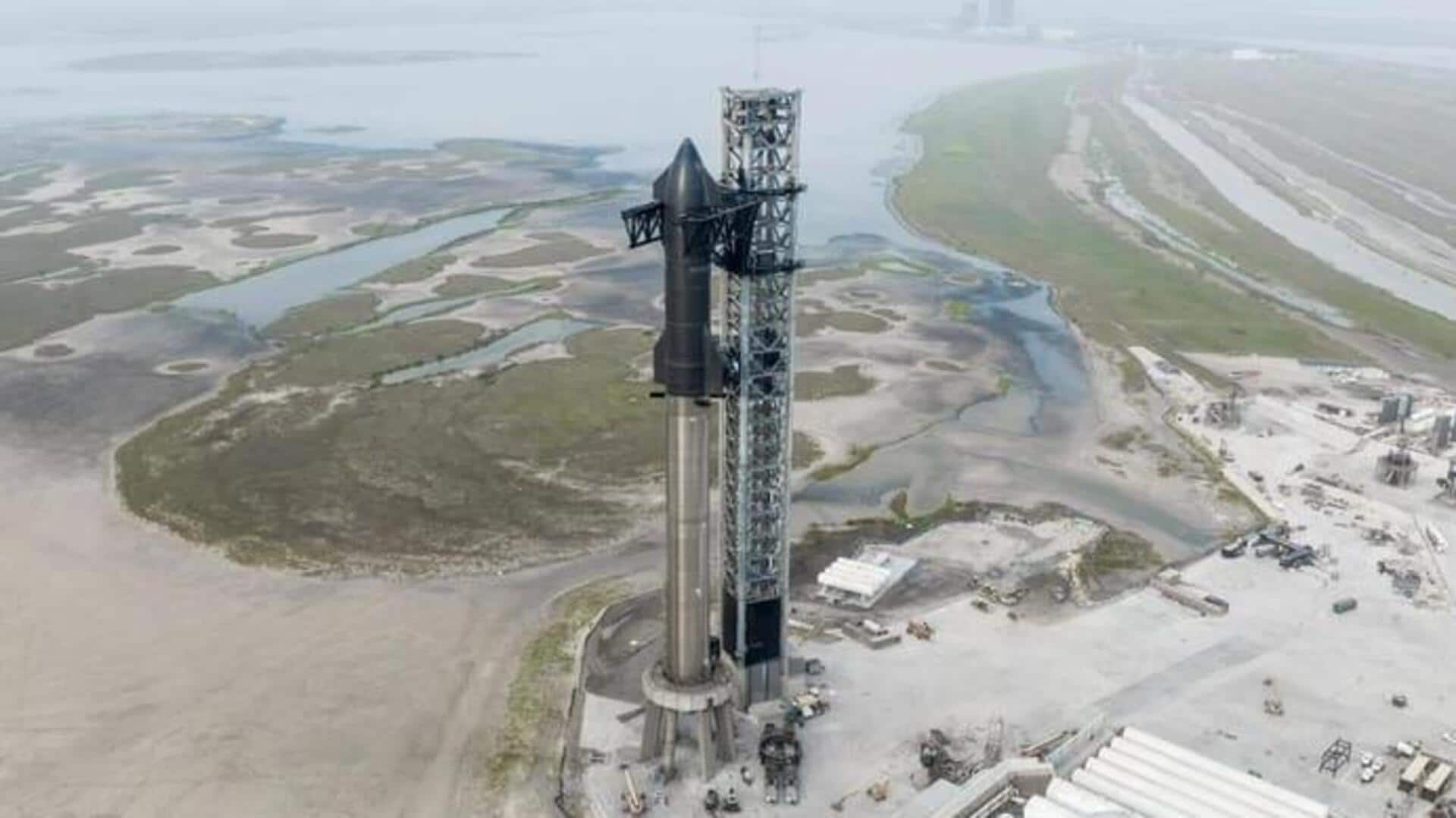
SpaceX makes over 1,000 changes to Starship before next flight
What's the story
SpaceX has made 'well over 1,000 changes' to Starship's design since its first-ever integrated test flight on April 20. This development has come to light after a recent Twitter discussion involving the company's CEO Elon Musk. The April test flight did manage to score a few milestones but the mega-rocket ran into technical issues and the company had to send a self-destruct command.
Context
Why does this story matter?
Starship, which is the world's most powerful rocket to have ever been built, has been drawing huge attention right from the start. According to SpaceX, the rocket will be able to ferry payloads to much longer distances and notably, at a "lower marginal cost per launch" than the current generation of Falcon rockets.
Components
Starship is the tallest and most powerful rocket ever built
In addition to being the most powerful rocket, Starship is also the tallest ever built. It comprises two components: a first-stage booster called Super Heavy and an upper-stage spacecraft which is also called Starship. Both the booster and spacecraft are powered by SpaceX's next-generation Raptor engines. Starship spacecraft features six engines while the Super Heavy booster gets 33 engines.
Test flight
What happened during the April 20 test flight?
The fully-stacked Starship lifted off for the first time on April 20 this year. The rocket's upper-stage was supposed to go halfway around Earth, returning with a splashdown in the Pacific. However, the Super Heavy booster and Starship spacecraft did not separate as planned. SpaceX then sent a self-destruct command, which caused the rocket to explode over the Gulf of Mexico.
Design changes
Since April, SpaceX has made "significant" changes to stage separation
SpaceX is now hard at work to ensure that the technical issues encountered in April do not recur during the next flight. The company has made "significant" changes to the way stage separation works, said Musk. That includes making use of hot staging, where the engines on upper-stage Starship will start powering up before those on the first-stage booster have shut down completely.
Changes
Starship's design has been revamped; engines have also undergone improvements
Making use of hot staging could ramp up Starship's capacity to deliver payloads to orbit by about 10%, Musk said. However, employing hot staging required the company to make over 1,000 design changes on Starship. The rocket will also have more uniform Raptor engines which carry minor but important enhancements compared to the ones on the April test flight.
Official words
SpaceX is adding a vented extension to the booster
With hot staging, the superhot plasma from the upper-stage engines requires a venting solution. For this, SpaceX is adding an extension to Starship's booster. "So we're adding an extension to the booster that is almost all vents, essentially. So that allows the upper-stage engine plume to go through the sort of vented extension of the booster and not just blow itself up," said Musk.
Objectives
Starship could launch again in six weeks
SpaceX is now gearing up for Starship's second flight, which will include an upper-stage prototype called Ship 25 and a Super Heavy component known as Booster 9. Ship 25 recently was subjected to an engine test. This flight could happen as soon as six to eight weeks. It will have similar objectives as Starship's first test flight that happened in April.
Testing
Ship 25 upper-stage prototype has logged a 'key milestone'
SpaceX has confirmed that the Ship 25 upper-stage prototype has completed a six-engine static fire test. In a tweet, Musk called the test a "key milestone" for the upcoming second Starship flight. Static fire tests are common prelaunch tests. During these tests, the engines are fired for a brief duration while the vehicle remains anchored to the ground.
Twitter Post
Take a look at the static fire test
Ship 25 completes a six-engine static fire test at Starbase in Texas pic.twitter.com/wCCrh0RRNA
— SpaceX (@SpaceX) June 27, 2023
Factors
Launch site is also undergoing some changes
The April launch caused substantial damages to the orbital launch mount at Starbase, SpaceX's facility in South Texas. The company is now filling up the launch mount with 35,300 cubic feet of "reinforced high-strength concrete," per Musk. A water-spouting steel plate is also being installed. It will "blast water upwards while the rocket is over the pad to counteract the massive amount of heat."